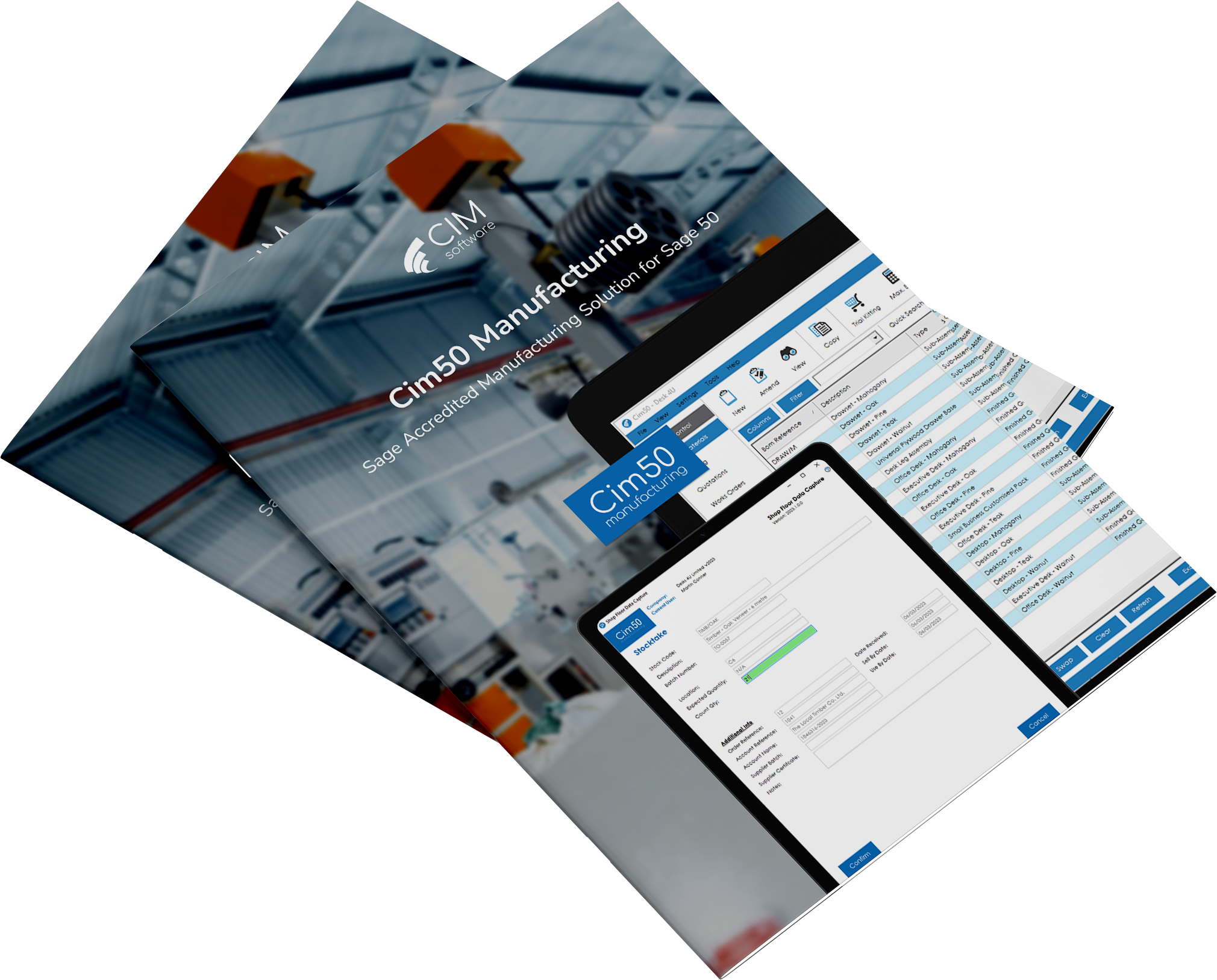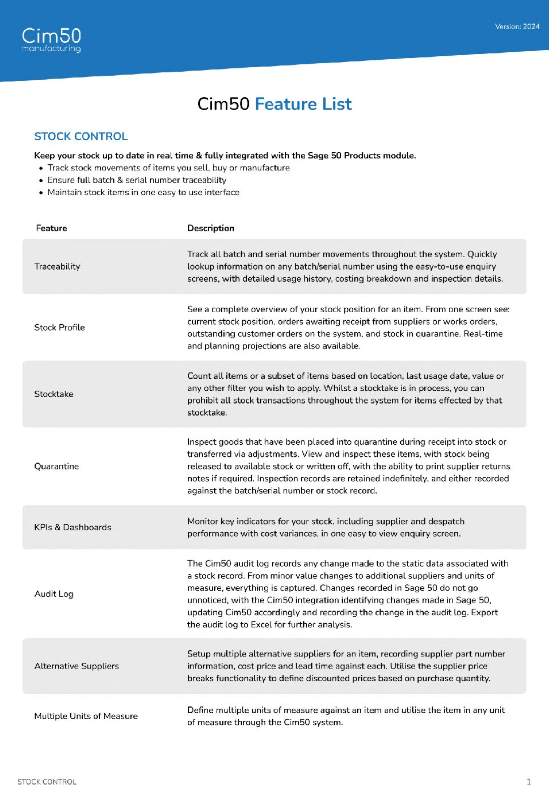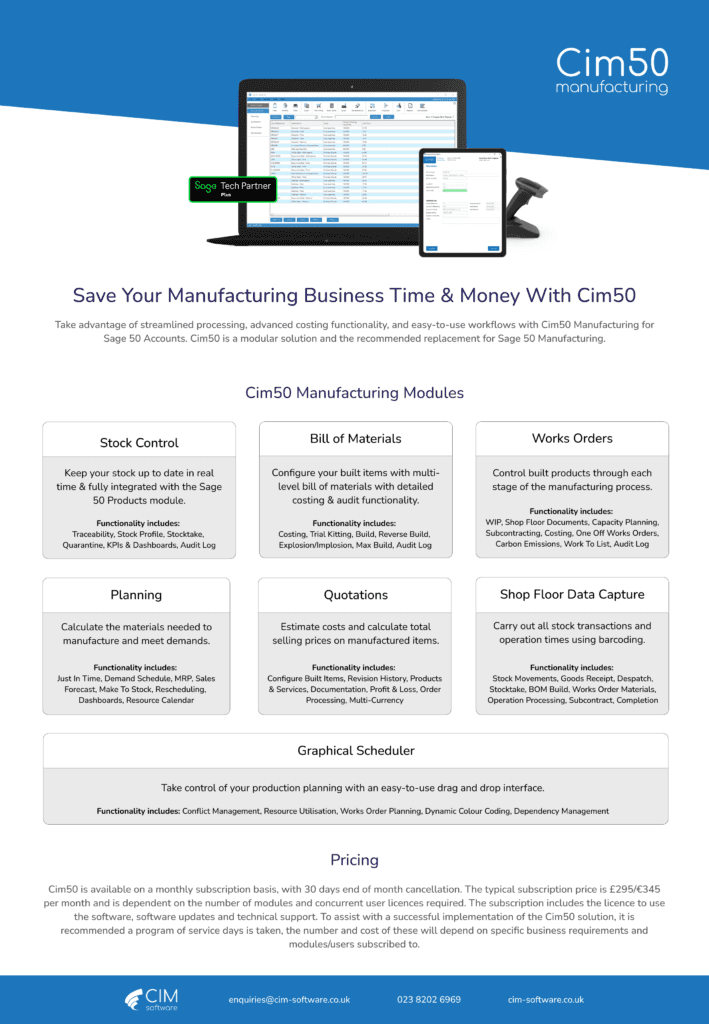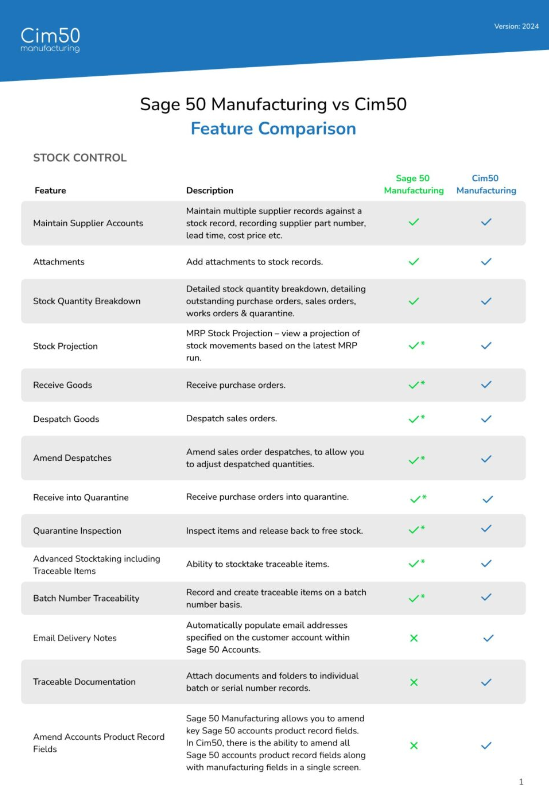Cim50 Carbon Footprint Calculator for Manufacturers
Calculate the carbon emissions generated from your manufacturing processes
Carbon Footprint Calculator for Manufacturing Businesses
Cim50, our manufacturing software, includes a unique set of features enabling businesses to work out the Carbon Footprint for their built products.
Our Carbon Footprint Calculator works out the carbon emissions generated from manufacturing processes through two different modes.
Both calculations result in a ‘Carbon Cost’ defined in KgCO2e (Kilograms of CO2 equivalent) which is calculated when a works order is completed.
With Cim50’s simple dashboard views, interrogate your carbon emissions produced during certain periods or on a month by month basis.

How To Calculate Your Carbon Footprint in Cim50
In Cim50, there are two different ways to calculate the carbon footprint of your manufactured items.
Simple Mode
Simple mode just requires your fuel bills as well as the carbon footprint of purchased items from suppliers.
Input the types of fuel you are using, the quantity and the timeframe, as well as the carbon footprint of your purchased items.
Complex Mode
Enter fuel usage and type against your production machinery, details of your vehicle fleet (including annual mileage, fuel type and emissions data), total fuel bills for a time period (the system will work out the proportion for the item) as well as the carbon footprint of any purchased items from suppliers.
An Award Winning Solution
Thanks to Cim50’s Carbon Footprint Calculator, CIM Software was named the ‘Sage Solution Innovation Partner of the Year, 2021’
Paul Emsley-Martin, Vice President, Partners & Ecosystems, Sage UKI presented the award with the following comments:
“This ISV partner shared how their new carbon emissions module has enabled a Sage customer to demonstrate that they have a complete overview of emissions output when manufacturing their product. Helping keep Sage relevant in the manufacturing space, congratulations!”
Cim50 Carbon Footprint FAQs
Can’t find the answer you’re looking for? Contact Us
In the simplest of terms, a carbon footprint represents the amount of carbon emitted when carrying out a task or action.
Everything we do in life has a carbon footprint, from our homes, the way we travel, the food we eat and the goods we use.
Before you can look at reducing your company’s carbon footprint, you first need to understand what your emissions are, and how they are generated.
This is where Cim50’s Carbon Footprint calculator can help. You can utilise the functionality available to determine what your primary carbon emitters are, and how much carbon equivalent is being emitted.
You can then take steps to lower your emissions, from simple changes such as using green energy tariffs, to infrastructure investment such as renewable energy sources, electrifying your vehicle fleet and offsetting surplus emissions, You can also consider your supply chain, and look to source products more locally.
There are also promising advances in carbon capture technology, which may become mainstream in the future.
The most common way of measuring carbon footprint is KgCO2e, which means kilograms of carbon equivalent. This unit is designed to standardise and account for all greenhouse gases, not just carbon dioxide.
The usage of any fuel (electricity, natural gas, petrol, diesel, propane etc) can be converted into KgCO2e, which then enables you to calculate your carbon footprint.
Currently, in the UK only large companies and public limited companies have to report their energy usage and carbon emissions. There is no requirement for small businesses to report their usage and emissions currently.
It is likely that in the future a carbon tax and/or changes to an environmental bill may result in all businesses having to report their emissions.
There is also an increasing number of environmentally conscious entities who require their suppliers to report their emissions when tendering for contracts, along with taking measures to lower their emissions.
There are separate Emissions Trading Schemes (ETS) which affects companies in the UK and EU. It currently only affects energy intensive industries, the power generation sector and aviation industry.
You can offset your carbon emissions via a number of offsetting schemes. There is a vast range of schemes available, from planting tree’s to energy saving applications around the world. All you need to do is choose a scheme that you wish to support, and pay them online. In return you will receive a carbon credit certificate, detailing the amount of KgCO2e offset.
Whilst offsetting your emissions will help to tackle climate change, you are effectively paying someone to reduce or absorb CO2e emissions to compensate for your own emissions.
Ideally, Carbon offsetting should form part of a wider emission cutting strategy.







